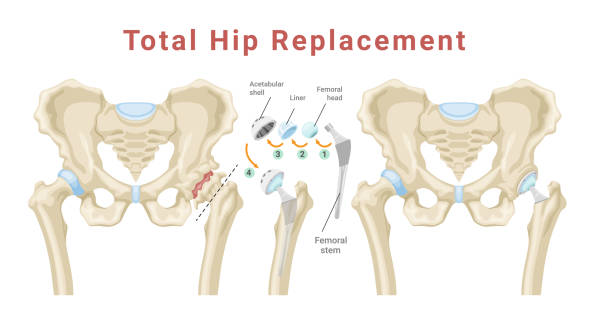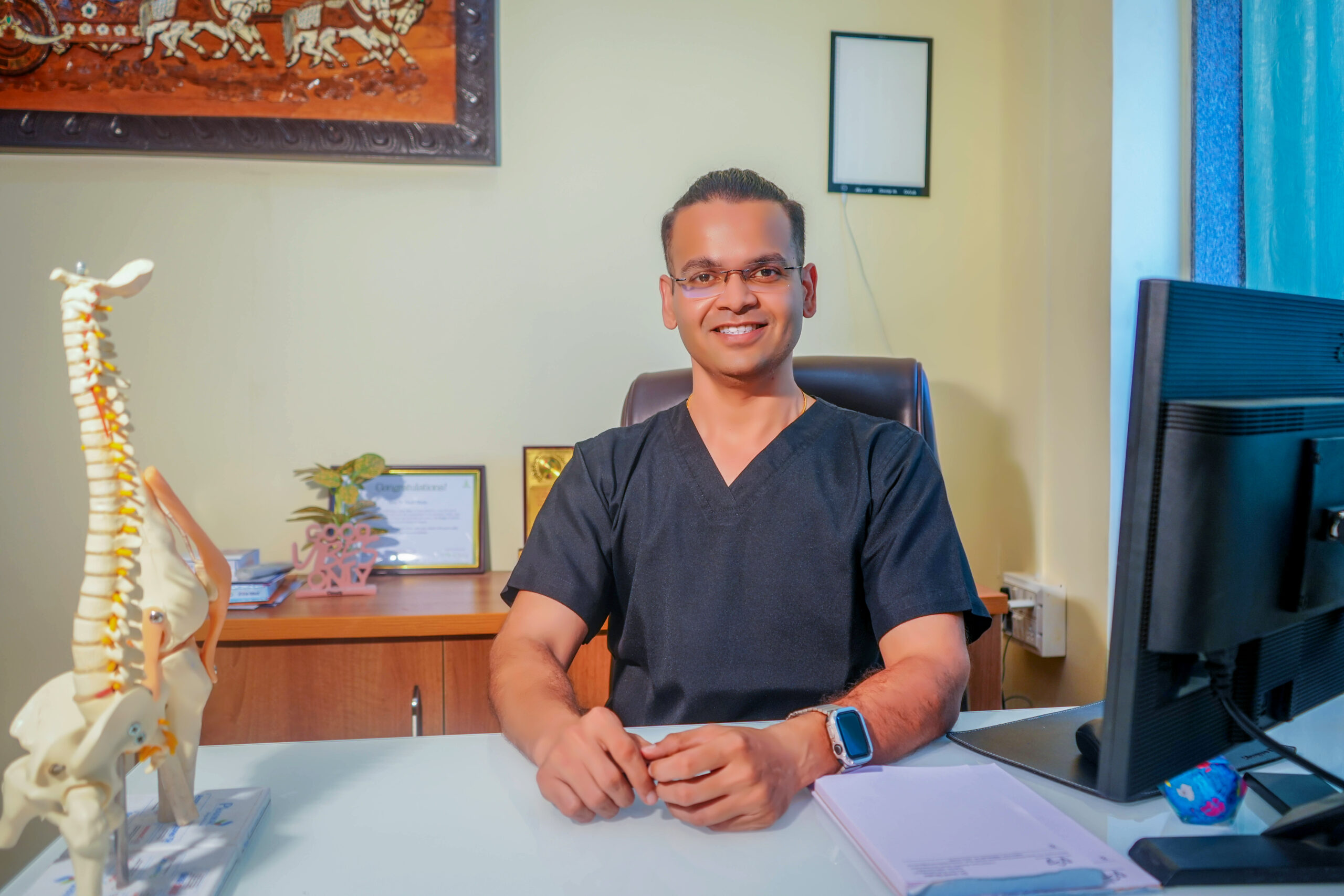Total Hip Replacement Surgery in Kandivali, Mumbai
Healthy hips are at the center of everyday movement. Whether walking, bending, or simply sitting down, the hip joint plays a crucial role in supporting balance and mobility. When this joint is damaged by arthritis, injury, or wear and tear, life can quickly become restrictive. Even simple actions like getting out of bed or climbing a few steps may turn into daunting tasks.
Here’s why it matters…
Globally, hip and other musculoskeletal conditions affect over 1.7 billion people, according to the World Health Organization. In India, nearly 15% of adults over 50 suffer from osteoarthritis, many of whom eventually face severe hip pain and stiffness.

Dr. Saurabh Talekar, a thoughtful Orthopedic Surgeon in Kandivali, shares:
“When hip pain persists, it’s no longer just a matter of discomfort. It typically prevents independence and keeps people from enjoying meaningful parts of their life. My goal is to provide personalized solutions—sometimes conservative, sometimes surgical—that not only recover joint function but also self-confidence. Total hip replacement today allows patients to reclaim mobility in ways that were once unimaginable.”
Struggling with hip pain that doesn’t seem to improve? Consult an Orthopedic Specialist to discuss personalized treatment options for lasting relief.
Get in touch
Wondering which conditions actually call for a hip replacement? Let’s break it down in simple terms.
Conditions Treated by Dr. Saurabh Talekar with Total Hip Replacement
Total hip replacement is often recommended when conservative treatments like medications, physiotherapy, or lifestyle changes fail to bring relief.
Here are the most common conditions treated:
Osteoarthritis
The most frequent cause of hip replacement, osteoarthritis gradually wears away the cartilage cushioning the joint. This leads to stiffness, swelling, and persistent pain.
Rheumatoid Arthritis
An autoimmune disorder that inflames the lining of joints, causing pain and deformity. Over time, this can severely damage the hip joint.
Avascular Necrosis
When the blood supply to the hip bone is disrupted, the bone tissue begins to die, resulting in severe pain and joint collapse.
Hip Fractures and Trauma
Injuries from accidents or falls can lead to irreparable damage that requires surgical replacement.
Childhood Hip Disorders
Conditions like hip dysplasia can cause early degeneration of the joint, eventually leading to the need for replacement in adulthood.
Knowing what conditions are treated is one thing—but how do you know you’re in the right hands? Let’s look at the expertise that makes a difference…
Dr. Saurabh Talekar’s Expertise in Hip Replacement

1. Incision and Removal of Damaged Bone:
The head of the thigh bone (femur) is carefully removed.
2. Cleaning the Hip Socket
The damaged cartilage and arthritic bone are cleared from the hip socket.
3. Placing the New Socket
A new artificial socket is securely fixed in place.
4. Inserting the Liner
A smooth liner is placed inside the socket to allow easy movement.
5. Positioning the Metal Stem
A metal stem is inserted into the femur for stability.
6. Attaching the New Ball Component
A ball is placed on top of the stem, designed to move smoothly within the new socket.
7. Final Adjustments
The surgeon checks alignment, range of motion, and stability before closing the incision.
Thinking about whether hip surgery could help you regain mobility? Speak with an Orthopedic Surgeon who can guide you through all available options.
Expertise is key, but trust and confidence come from more than just surgical skill…
Let’s see why many patients prefer this care.
Why Choose Dr. Saurabh Talekar for Total Hip Replacement?
Choosing the right surgeon can make all the difference in both short-term recovery and long-term results. Patients often select Dr. Talekar because of:
Patient-Centered Care
He ensures every individual receives tailored treatment, explaining options in clear and relatable terms.
Advanced Technology
Use of modern implants ensures safety and durability.
Precision in Surgery
He uses modern minimally invasive techniques to ensure faster recovery and reduced pain.
Strong Outcomes
His focus is not just pain relief but restoring natural mobility, independence, and confidence.

Incision and Removal of Damaged Bone
The head of the thigh bone (femur) is carefully removed.
Comprehensive Approach
Combining surgical treatment with preventive care, physiotherapy, and weight management solutions.
International Exposure
Training in advanced centers has given him insights into global best practices, which he applies in his practice.
Incision and Removal of Damaged Bone
The head of the thigh bone (femur) is carefully removed.
“Every hip surgery is unique, just like every patient. Some come in after years of gradual pain, others after sudden trauma. The challenge is to not just replace a joint but to create a new lease on life. With today’s techniques, we can do this safely and effectively, even for patients with complex conditions.”
Cost is often the next question that comes to mind. Let’s explore what goes into the expense of hip replacement surgery.
Cost of Total Hip Replacement Surgery in Kandivali, Mumbai
On average, the total hip replacement cost in Mumbai ranges between ₹2,00,000 to ₹4,50,000, depending on the type of implant, hospital setup, and level of care required. While this may seem like a significant investment, it often provides decades of improved mobility and pain-free living.
Several factors can influence the final cost:
Type of Implant Used: Premium or imported implants, built for higher durability and natural movement, are usually priced higher.
Surgeon’s Experience: Expertise and precision play a direct role in outcomes, and this is often reflected in the cost.
Hospital Infrastructure: Modern operating theaters, robotic assistance, or enhanced rehabilitation services may add to expenses.
Pre- and Post-Operative Care: Physiotherapy sessions, diagnostics, medications, and follow-up visits also contribute to the overall expense.
* Please Note: Most major health insurance providers in India cover hip replacement surgery, either fully or partially, depending on the policy terms. Patients are encouraged to check with their insurance company to understand inclusions, waiting periods, and cashless hospitalization options.
In Kandivali, the cost remains competitively priced compared to other metropolitan cities, ensuring patients receive both quality and value without compromising on care.
Concerned about the financial aspects of surgery? Speak with a healthcare provider who can guide you on cost, insurance coverage, and flexible treatment plans.
FAQ’s
What types of hip implants are used?
Implants can be made from metal, ceramic, or a combination of materials. The choice depends on age, activity level, and bone quality. Each option is designed to mimic natural joint movement while offering long-lasting support.
How long does hip replacement take to recover?
Most patients begin walking with support within a few days of surgery. Full recovery can take 3–6 months, depending on age, overall health, and adherence to physiotherapy.
How painful is hip replacement?
With modern anesthesia and minimally invasive techniques, post-surgery pain is much lower than in the past. Discomfort is usually manageable with medication and reduces significantly within weeks.
Can you climb stairs after hip replacement?
Yes, with proper rehabilitation, most patients are able to climb stairs within a few weeks of surgery. Physiotherapy plays a big role in regaining strength and balance.
Is hip replacement a permanent solution?
While no implant lasts forever, most modern hip replacements can last 15–20 years or more with proper care. Maintaining a healthy weight and staying active further improves longevity.
Disclaimer: The information shared in this content is for educational purposes only and not for promotional use.
